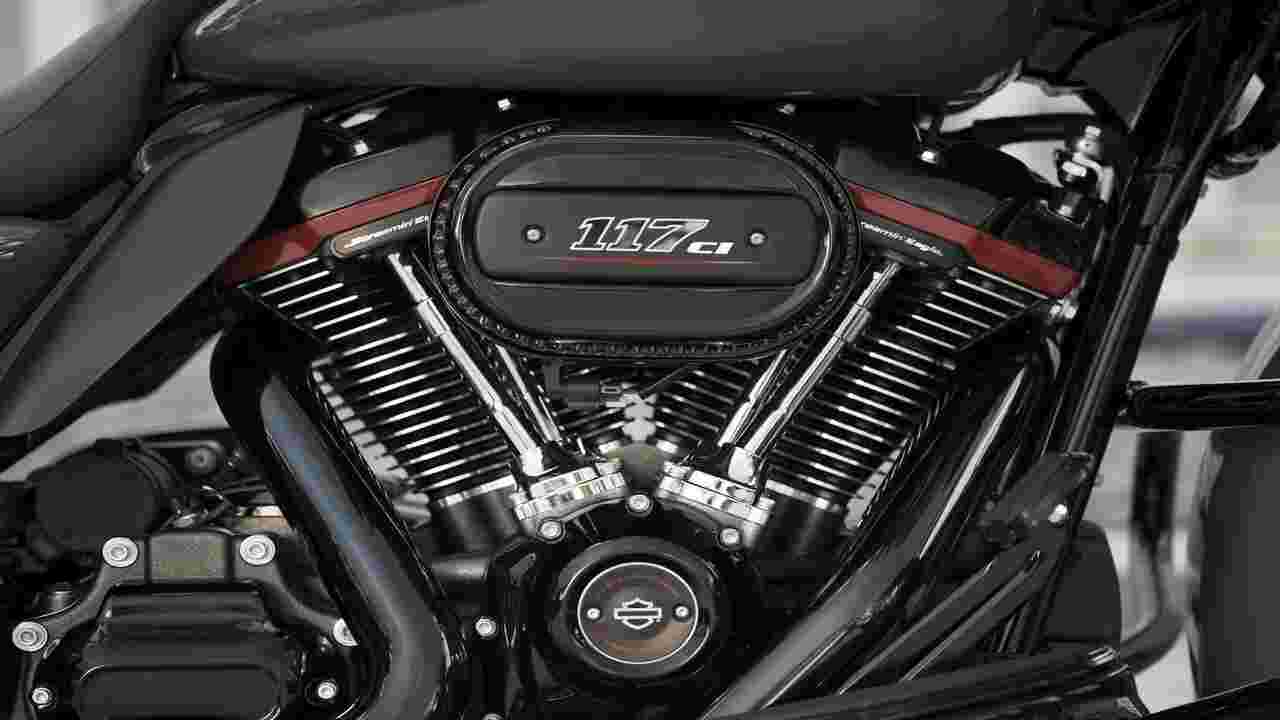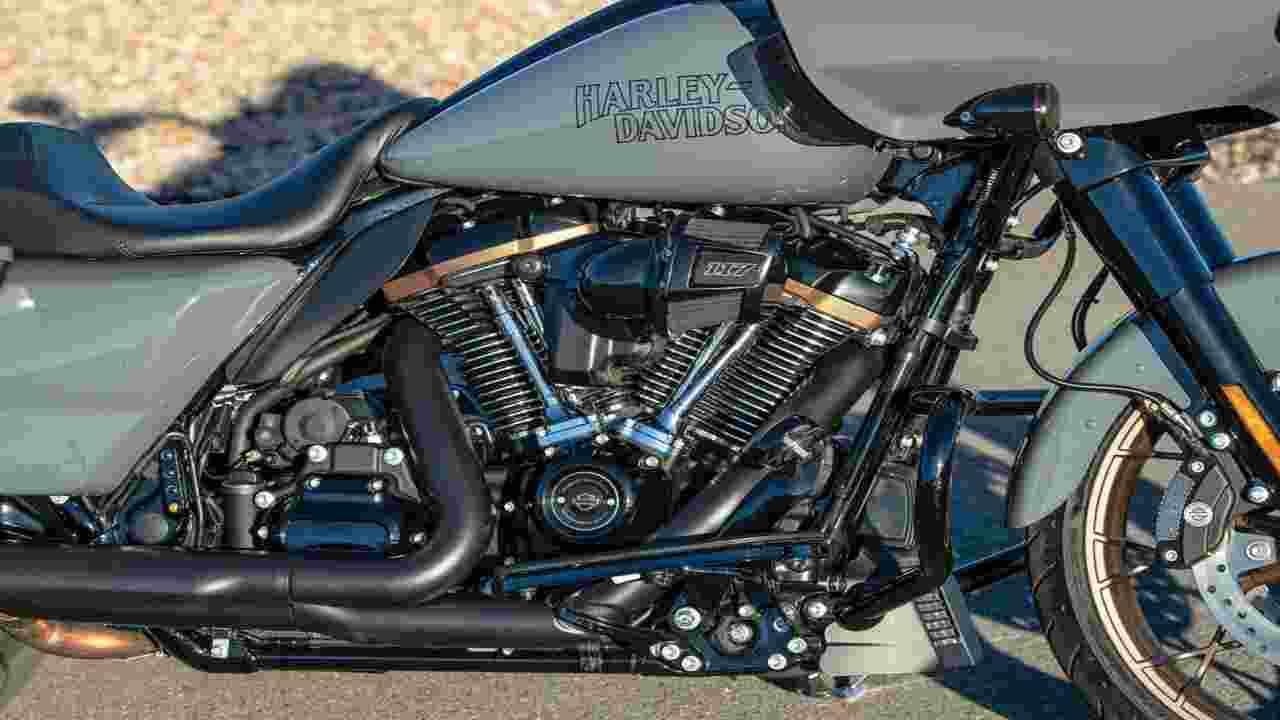Harley Davidson, the iconic American motorcycle brand, has long been synonymous with power, performance, and style. With over a century of heritage and innovation, Harley Davidson continues to dominate the motorcycle industry with its renowned V-twin design engines.
As avid riders and enthusiasts know, the engine size and type can greatly impact the overall riding experience. That is why we have created a comprehensive guide to the Harley Davidson engine sizes in a chart.
Here, we will delve into the different engine families, their corresponding sizes, and their distinct features and capabilities. So, if you are curious about the Engine behind the legendary roar of a Harley, look no further – our Harley Davidson engine size chart has got you covered.

Harley Davidson Engine Size Chart And Engine’s List

The Harley Davidson engine size chart is valuable for motorcycle enthusiasts and potential buyers. This chart provides information on the different engine sizes available for Harley Davidson motorcycles and explains what each size means regarding performance and power.
The engine size is typically measured in cubic inches or litres and directly correlates to the motorcycle’s horsepower and torque capabilities. A larger engine size generally indicates a more powerful and high-performance motorcycle. At the same time, a smaller one may be better suited for beginners or those looking for a more fuel-efficient ride.
Here is a chart showcasing the engine sizes of Harley-Davidson motorcycles:
| Model | Engine Size (cc) |
| Sportster 883 | 883 |
| Sportster 1200 | 1202 |
| Dyna 103 | 1690 |
| Softail 107 | 1745 |
| Softail 114 | 1868 |
| Touring 107 | 1745 |
| Touring 114 | 1868 |
| Touring 117 | 1923 |
| CVO 117 | 1923 |
| CVO 117S | 1923 |
F-Head Engine

The earliest Harley engine appeared first in the 1911 model year, Motorcycle Engine. Also, many experts consider this Engine one of the earliest 45° V-twin engines. The Engine appeared in the market with 61 or 74ci versions and 1000cc or 1210cc options. Harley stopped producing these engines till 1929.
Flathead Engine
After the F-head, Harley launched the Flathead engines in 1930. Initially, this engine capacity came with 45ci, while the company introduced a 74ci V model to the public. These engines were available in 737cc and 1212cc options.
Then, the U series motors of these engines replaced previous V models that started in 1937. Later, the UH series appeared with an 80ci motor from 1937 to 1941. Flathead engines were produced till the 1970s.
Knucklehead Engine

It was launched in the motorbike industry in 1936 with popular rocker arms boxes. The Engine came with 61 or 74ci versions and 983cc or 1212cc options. Harley continued the production of this Engine till 1947. Later, the Panhead engine of similar size replaced Knucklehead in 1948.
Shovelhead Engine
Shovelhead is considered the successor to previous models of Panhead engines introduced in the market in 1966. These engines were available with 74ci and 82ci versions and 1212cc and 1343cc options. The AMF era is related to the production of Shovelhead engines, as they bought Harley in 1969. This era ended in 1981, and Harley took ownership back again.
Evolution Engine

The Harley Evolution (Evo) engines were first made known to the public in 1984. The Engine was available in 80ci and 1343cc sizes. The Evolution era stopped in 1999. Still, many Harley Evos-supported motorcycle owners look for this Engine.
With its improved design and enhanced performance capabilities, the Evolution Engine proved to be a game-changer for Harley Davidson. It featured a more efficient combustion chamber, improved cooling system, and increased displacement, resulting in better overall performance and reliability.
Twin Cam Engine
It is probably one of the engines available in multiple sizes. Starting in 1999 with an 88ci engine, Harley produced other sizes of Twin Cam engines like 93ci, 103ci, and 110ci. Indeed, these engines were better than the Evo engines. You may find these engines in 1442 to 1687cc size options. Harley Davidson used these engines in their motorcycles till 2017.
Revolution Engine
The engine production was from 2001 to 2017. New V-twin configuration engines appeared in 2001 with 60° V-Rods instead of the previous 45°s. This Revolution engine began with 69ci, which improved to 76ci in 2008.
Likewise, the machine is available in 1133cc to 1247cc options. Whether you’re a beginner looking for a more manageable ride or a seasoned rider seeking maximum power output, there’s a Revolution Engine size for you. So, hop on your Harley and experience the thrill of the road with this legendary Engine.
Milwaukee-Eight Wafflehead Engine

If you want the contemporary ones from Harley Davidson, consider the Milwaukee-Eight engines. Many bikers know this Engine as the “Big Twin” engine. Again, the beginning of this modern motor was in 2017.
The engine configurations are available in 107ci (1750cc) and 114ci (1870cc), which began in 2017. But you can find 117ci (1920cc) Milwaukee-Eight engines, too, started in 2018. The Milwaukee-Eight Wafflehead Engine features overhead valves with separate exhaust and intake valves.
Benefits And Drawbacks Of Different Engine Sizes
Regarding Harley Davidson motorcycles, the air-cooled engine size significantly determines the performance and overall riding experience. Ultimately, the choice of engine size depends on individual preferences, riding goals, and experience level.
It’s important to consider factors such as intended use, comfort, and personal skill when selecting a Harley Davidson motorcycle with the right engine size for you. Here are some benefits and drawbacks of different engine sizes:
Small Engine (500cc – 750cc):
- Benefits: Lightweight and elegant, ideal for beginners or riders who prefer a more relaxed cruising style.
- Drawbacks: Limited power and acceleration, may struggle on highways or long-distance rides.
Medium Engine (800cc – 1200cc):
- Benefits: A good balance between power and maneuverability, suitable for a wide range of riding styles.
- Drawbacks: They are not as powerful as larger engines and may not provide the same level of speed or acceleration.
Large Engine (1300cc And Above):
- Benefits: Offers impressive power and torque, perfect for riders who crave thrilling acceleration and high-speed adventures.
- Drawbacks: Heavier and less agile than smaller engines, may require more effort to handle in tight corners or congested traffic.
How Engine Size Affects Performance And Power

Regarding Harley Davidson motorcycles, advanced engine size plays a crucial role in determining performance and power. Generally, larger engine sizes result in greater horsepower and torque, which improves acceleration and top speed.
However, it’s important to note that other factors, such as weight and aerodynamics, also impact overall performance. Smaller engine sizes may be more suitable for riders seeking a smoother ride and better fuel injection efficiency.
Ultimately, the choice of engine size depends on individual preferences and riding style. It’s recommended to test-ride different earlier models with varying engine sizes to find the perfect balance between power and comfort.
Choosing The Right Engine Size For Your Riding Style And Preferences
Regarding choosing the right engine size for your Harley Davidson, it’s important to consider your riding style and preferences. The engine size will determine the power and performance of your motorcycle, so finding the right fit is crucial.
If you’re a fan of long rides on open highways, a larger engine size, such as the 107 or 114 cubic inches, may suit you. These engines provide ample power for cruising at higher speeds and handling heavier loads.
On the other hand, if you prefer shorter trips or city riding, a smaller engine size, like 96 or 103 cubic inches, might be a better choice. These engines offer good acceleration and maneuverability in urban environments.
Ultimately, it’s important to test-ride different engine sizes to see which one feels most comfortable and suits your riding needs. When selecting the ideal engine size for your riding style and preferences, it is important to consider factors such as oil circulation, aluminium heads, and the power delivered by your human fist.
Factors To Consider When Buying A Used Harley Davidson With A Specific Engine Size

When buying a used Harley Davidson with a specific engine size, several factors must be considered. First, you’ll want to determine if the engine size is suitable for your riding style and needs. Smaller engine sizes may be more suitable for beginners or those who plan on using the motorcycle for casual rides.
In comparison, larger engine sizes may be better suited for experienced riders or those who plan on taking longer trips or participating in more intense riding activities. Additionally, you’ll want to consider the age and condition of the motorcycle, as well as any maintenance or repair history.
It’s also important to research the specific internal combustion engine size and single-cylinder model to ensure that it has a good reputation for reliability and performance. Considering these factors can help you make an informed decision when buying a used Harley Davidson with a specific engine size.
Conclusion
Understanding the engine size of a Harley Davidson motorcycle is crucial when choosing the right bike for your needs and preferences. The engine size determines the power and performance capabilities of the motorcycle, as well as its overall riding experience.
By referring to the Harley Davidson engine size chart, you can easily compare and contrast different Touring models and make an informed decision. Whether you’re looking for a smaller engine for city commuting or a larger one for long-distance cruising, Harley Davidson offers a range of options to suit every rider.
So, take the time to explore the chart, consider your riding style, and find the perfect Harley Davidson motorcycle that matches your personality and gives you an exhilarating ride.
FAQ
What Engine Sizes Do Harley-Davidson Have?
Harley-Davidson offers a range of engine sizes to suit different riders’ preferences and riding styles. The iconic motorcycle brand is known for its powerful and legendary engines, which deliver an exhilarating riding experience. Harley-Davidson offers a wide range of engine sizes, ranging from 500cc to 1,800cc.
What Is The Biggest Harley Engine?
The biggest Harley engine is the Screamin’ Eagle Milwaukee-Eight 131 cubic inch (2,147 cc) V-twin engine, a high-performance aftermarket upgrade for Harley-Davidson motorcycles.
What Harley Motor Is 1800cc?
The Harley-Davidson Milwaukee-Eight 114 engine is the 1800cc motor that powers select Harley-Davidson models. This powerful Engine delivers impressive performance and torque, making it an ideal choice for riders looking for a thrilling experience on the road.
How Many Cc Is A Harley-Davidson?
The engine size of a Harley-Davidson can vary depending on the specific model and year. However, Harley-Davidson motorcycles typically range from 883cc to 1868cc.
Is There A 500cc Harley?
No, Harley-Davidson does not currently produce a 500cc motorcycle in their lineup. The smallest engine size in their current lineup is 883cc. However, in the past, Harley-Davidson did produce a 500cc motorcycle called the Harley-Davidson XG500, which was part of their Street series.

Hello, I have a Harley Davidson engine, with this engine number: *FJLW 62 1000 * please, what is the characteristic of that engine.
Thank you .
David
Shut up david
Characteristics? … um slow, unbalanced and mechanically unreliable.